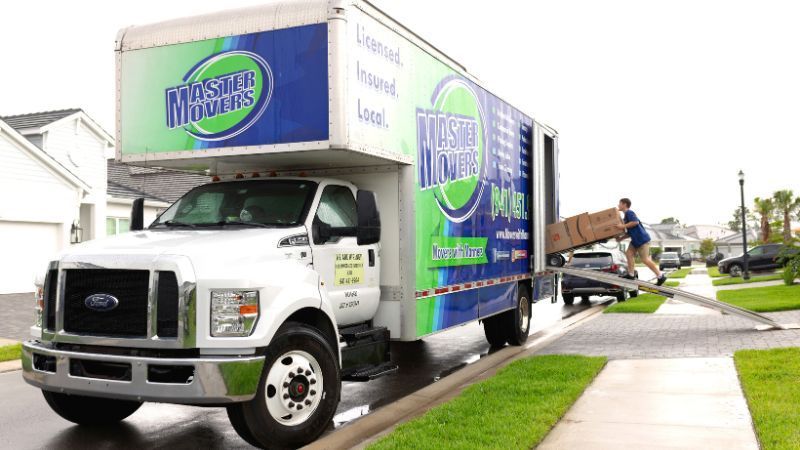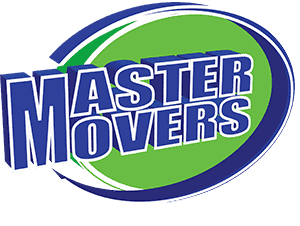Navigating Venice FL Moving Regulations and Permits

Welcome to Venice, Florida, a beautiful city known for its stunning beaches, vibrant community, and historic charm. Whether you're planning to move here or are preparing for an intra-city transition, understanding the local moving regulations and permits is essential for a seamless process. Venice, with its unique regulations, requires a bit of navigational skill to ensure everything goes smoothly during your move.
What You Need to Know About Venice FL Moving Regulations and Permits
Moving can be an exciting time of transition and new beginnings. However, it can also bring challenges, especially with the logistics of packing, moving, and setting up in a new place. In Venice, FL, specific moving regulations and permits are designed to protect the integrity of both the residential and commercial areas while ensuring public safety and convenience.
Types of Moving Permits in Venice FL
When planning a move in Venice, FL, it's essential to determine which type of permit you'll need. The city categorizes moving permits primarily into three groups to accommodate different needs and circumstances:
- Residential Moving Permits:
- These permits are required if you're moving into or out of a residential area. This includes single-family homes, apartments, and condos. The permit ensures that moving trucks do not block traffic and that the move adheres to neighborhood regulations.
- Commercial Moving Permits:
- Businesses relocating within or into Venice must secure a commercial moving permit. This type of permit addresses considerations like parking for large trucks, use of loading zones, and minimal disruption to other businesses and traffic during operating hours.
- Specialty Move Permits:
- These are required for moves involving oversized items or special equipment that could affect public infrastructure, such as large sculptures, industrial equipment, or prefabricated homes. This permit often necessitates additional clearances from city departments to ensure public safety and infrastructure protection.
How to Apply for Moving Permits in Venice FL
Securing a moving permit in Venice, FL involves a straightforward process:
- Identify the Type of Permit Required: First, determine whether you need a residential, commercial, or special circumstance permit based on your moving details.
- Gather Necessary Documentation:
- For residential moves, this might include proof of residency or a lease agreement.
- Commercial moves require details about the business and the destination premises.
- Special circumstances might need additional documentation related to the items being moved.
- Submit the Application:
- Applications for moving permits can usually be submitted online through the city’s official website, by mail, or in person at the local city office.
- Ensure to fill out all required fields to avoid delays.
- Pay the Required Fees:
- Fees vary depending on the type of permit and the specifics of the move. Be prepared to pay these fees at the time of application submission to expedite the processing.
- Wait for Approval:
- Permit approvals can take a few days to a few weeks, depending on the complexity of the move and the type of permit. Planning ahead is crucial.
Common Regulations for Moving in Venice FL
When you're moving within or into Venice, FL, adhering to the common local moving regulations is key to ensuring your relocation proceeds without hitches. Familiarizing yourself with these rules will also help in avoiding potential fines or disruptions during your move:
- Parking Restrictions for Moving Trucks:
- Venice Fl, has relocation packing strategies and specific regulations about where moving trucks can park, particularly in residential areas and busy streets. It's important to verify these rules to avoid tickets and towing.
- Often, you may need to secure special permissions if the moving truck needs to park in a restricted area temporarily.
- Time Restrictions on Moving Activities:
- To minimize disruption in residential areas, Venice imposes time restrictions on when moving activities can take place. Typically, moving is restricted during late evening and early morning hours.
- Check the specific times with the local authorities, as these might vary by neighborhood, especially in areas with noise ordinances.
- Noise Ordinances Impacting Moving Times:
- The city enforces noise ordinances that prohibit excessive noise during certain hours. This can affect when you can load or unload your moving truck.
- It is advisable to plan your move during times when noise levels are permissible to avoid disturbances and potential penalties.
- Special Rules for Historic Districts:
- If you're moving to or from a designated historic district in Venice, you might encounter stricter regulations designed to preserve the area's character and infrastructure.
- These regulations could include limits on the size of moving trucks and additional permit requirements for any exterior changes to historic properties.
Adherence to Community Rules and HOA Requirements:
- In areas governed by a Homeowners Association (HOA), additional rules might apply. These can include specific moving times, approved parking locations, and even types of vehicles allowed.
- Always check with your HOA or community management to ensure compliance before planning your move to avert last-minute complications.
Handling Special Moving Situations in Venice FL
When moving to or within Venice, FL, certain situations require special attention and preparation due to their unique nature. Handling these appropriately ensures compliance with local laws and can help avoid unnecessary complications.
Moving Large Items: Special Permits and Considerations
For items that are unusually large or heavy, such as industrial machinery, large-scale artworks, or oversized furniture, special handling and permits may be necessary:
- Permit Requirements for Oversized Items:
- Check with Venice city authorities to determine if your items qualify as oversized according to local standards.
- Apply for a special permit that allows the transportation of large items, which may involve route restrictions and specific transport times to minimize disruption.
- Safety Regulations and Guidelines:
- Follow city guidelines on how to securely move large items to protect not only the items but also the public and infrastructure.
- Use professional movers, like Master Movers, who are experienced in handling and navigating the transport of oversized loads safely through urban environments.
Moving in Historical Areas and Special Zones in Venice FL
Venice is home to historically significant areas and special zones where regular moving procedures might not suffice due to stricter preservation and traffic laws:
- Specific Regulations for Historical Districts:
- Historical districts often have stringent rules designed to protect architectural integrity and community aesthetics.
- Obtain all necessary permits that account for these special considerations. This might include restrictions on the type of moving trucks allowed or specific loading/unloading procedures.
- Precautions and Required Permits for Special Zones:
- Areas near schools, hospitals, or government buildings might have restricted access during certain times of the day or require additional security checks.
- Plan your move around these restrictions and ensure that all personnel involved are aware of and adhere to these special requirements.
Tips for Managing Special Moving Situations:
- Early Planning: Begin the process of checking for any special permits and regulations as early as possible to ensure all paperwork and preparations are completed in time for your move.
- Professional Guidance: Utilize the services of experienced moving companies like Master Movers, who can navigate the complexities of special permits and regulations, ensuring a smooth move.
Final Thoughts
Moving to or within Venice, FL, can be a complex process given the variety of local regulations and permits involved. However, with proper planning, understanding, and the right assistance, it can also be a smooth and successful transition. Remember, the key to a stress-free move lies in early preparation, clear communication, and utilizing professional services. Master Movers “Movers with Manners”, renowned for their expertise and courteous service, stands ready to ensure that your move to Venice is executed with precision and respect for all local norms.
Our Latest Blog





